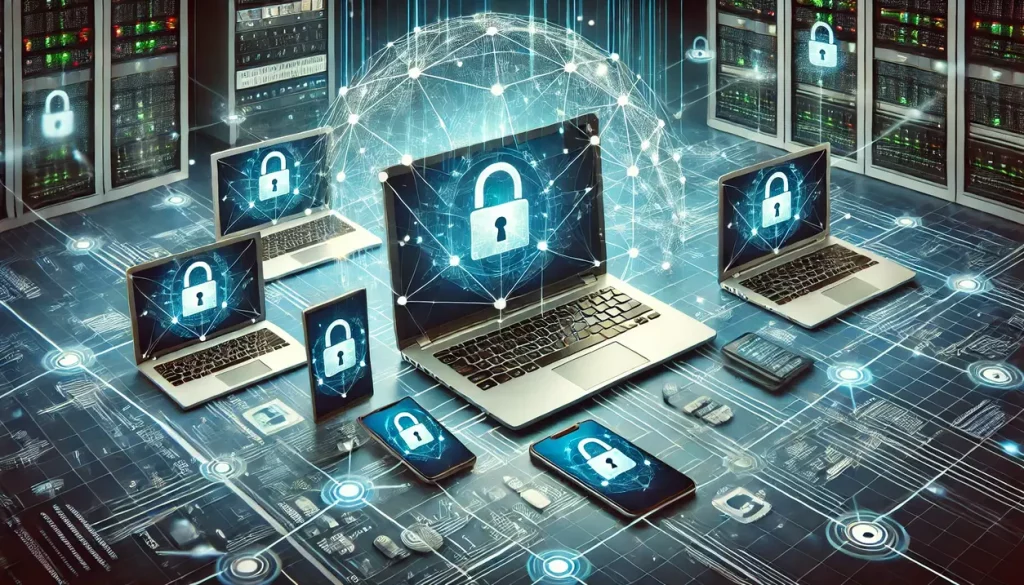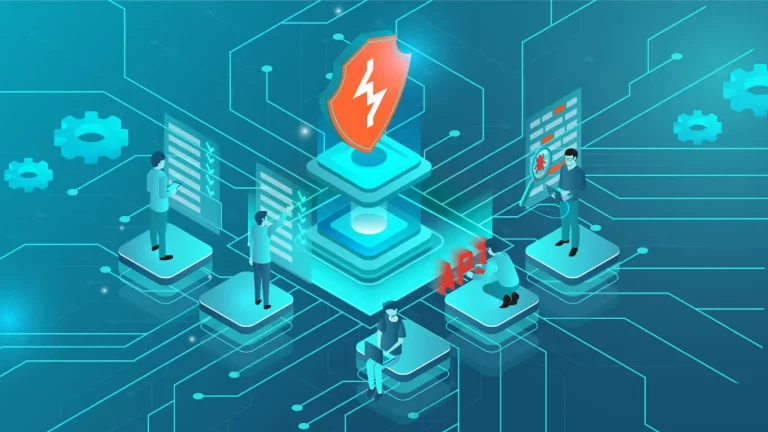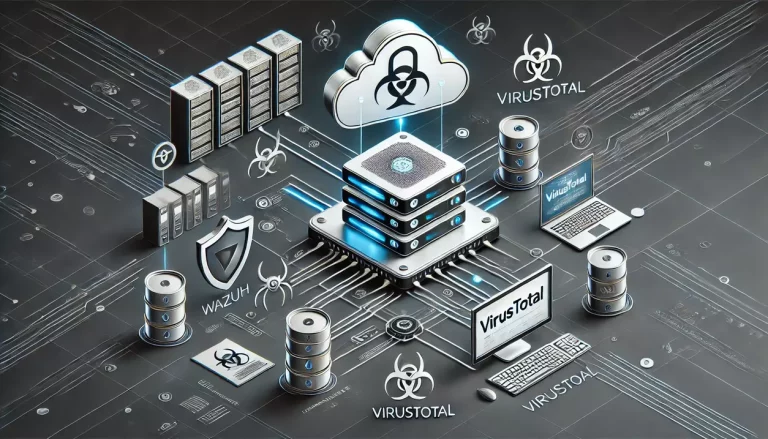Endpoints (laptops, desktops, mobile devices, and servers) are prime targets for cyberattacks. As networks grow increasingly complex, securing these devices has become more critical than ever.
A compromised endpoint can be an entry point for malicious actors to gain access to your entire network, making endpoint security one of the most crucial pillars of any organization’s cybersecurity strategy.
In this detailed guide, we’ll explore practical, tried-and-tested best practices for securing endpoints within a network. We’ll cover methods that go beyond basic advice, providing actionable steps that you can implement immediately to protect your devices.
Enforce Strong Authentication and Access Control
Two-Factor Authentication (2FA) and Beyond
Password-based security alone is insufficient. Weak, reused, or stolen passwords are a common vulnerability that can allow attackers to breach your network. Implementing multi-factor authentication (MFA), particularly two-factor authentication (2FA), provides an additional layer of security.
Example: Google’s Advanced Protection Program mandates 2FA using physical security keys, ensuring even if a password is compromised, unauthorized access can be blocked. You should implement similar controls with MFA tokens, biometrics, or app-based authentication.
- Actionable Tip: Make MFA mandatory for all users, particularly those with access to sensitive data, administrative functions, or privileged accounts. Regularly update and audit access policies.
- Tool Suggestion: Tools like Duo Security or Microsoft Authenticator can help enforce MFA across different endpoints and platforms.
Role-Based Access Control (RBAC)
Every user in your network should have access to only what they need for their role—no more, no less. This principle, known as the principle of least privilege (PoLP), minimizes the damage that can occur if an account is compromised.
Example: A hospital implements RBAC to ensure nurses, doctors, and administrative staff can access only the patient records and systems relevant to their roles.
- Actionable Tip: Regularly review access privileges and remove unnecessary permissions. Integrate automated systems to flag irregularities in access behavior or outdated access permissions.
- Tool Suggestion: Use Active Directory’s role-based access management or cloud-based tools like Okta to streamline privilege management.
Implement Endpoint Detection and Response (EDR) Solutions
Advanced persistent threats (APTs) and sophisticated malware often evade traditional antivirus software. Endpoint Detection and Response (EDR) solutions offer continuous monitoring, detection, and remediation capabilities for endpoint devices.
Example: CrowdStrike’s Falcon platform uses behavioral analytics to detect unusual activity on endpoints, such as unexpected file encryption (a common indicator of ransomware). Once detected, it can automatically quarantine the device to prevent the spread of malware.
- Actionable Tip: Deploy EDR solutions that offer real-time monitoring, anomaly detection, and automated threat mitigation. Look for solutions with advanced capabilities like machine learning and threat intelligence integration.
- Tool Suggestion: Consider tools like CrowdStrike, Carbon Black, or Microsoft Defender ATP for robust endpoint protection and incident response.
Keep Systems and Software Up-to-Date
Unpatched vulnerabilities in operating systems and applications are among the most exploited security gaps in endpoint devices. Patch management is a critical element of endpoint security.
Example: The infamous WannaCry ransomware attack exploited a vulnerability in outdated versions of Windows. The patch had been available for months, but organizations that hadn’t updated their systems were left vulnerable.
- Actionable Tip: Automate patch management where possible. Ensure that your systems are set to automatically download and apply security updates, and prioritize patching critical vulnerabilities.
- Tool Suggestion: WSUS (Windows Server Update Services) for Windows environments or cloud-based tools like Automox for managing patches across various operating systems.
Use Disk Encryption
Data-at-rest encryption ensures that if an endpoint device is lost or stolen, the data on it remains secure and unreadable to unauthorized users. Full-disk encryption tools like BitLocker (Windows) or FileVault (macOS) are essential for protecting sensitive data on endpoint devices.
Example: A government employee loses a laptop containing classified information. Because the device is encrypted with BitLocker, the data is protected and cannot be accessed by unauthorized individuals.
- Actionable Tip: Enable full-disk encryption on all company devices. Make this a mandatory step during device setup, ensuring that encryption keys are securely stored and managed.
- Tool Suggestion: Use BitLocker for Windows or FileVault for macOS. For Linux environments, consider tools like LUKS (Linux Unified Key Setup).
Employ Application Whitelisting
Application whitelisting controls which programs can execute on endpoint devices, blocking unauthorized software from running. This practice significantly reduces the risk of malware or unapproved applications being executed.
Example: A financial institution implements application whitelisting, allowing only pre-approved, signed applications to run on employee machines. As a result, attempts to install unauthorized software, including malware, are automatically blocked.
- Actionable Tip: Maintain an up-to-date whitelist of authorized applications. Review and audit this list regularly to ensure it aligns with your security policies.
- Tool Suggestion: Windows AppLocker or third-party solutions like Ivanti Application Control are effective tools for enforcing whitelisting policies.
Enforce USB Device Control and Data Loss Prevention (DLP)
Unauthorized USB devices pose a significant security threat. Attackers can introduce malware through infected USB drives, or employees could inadvertently leak sensitive data by transferring files to unapproved storage devices.
Example: An engineering firm suffered a data breach when an employee transferred sensitive design files onto a personal USB drive, which was later lost. If USB device control had been in place, this situation could have been prevented.
- Actionable Tip: Restrict the use of USB devices by enforcing USB port control policies, and deploy DLP tools to monitor and prevent unauthorized data transfers.
- Tool Suggestion: Use tools like Symantec DLP or ManageEngine Device Control Plus to monitor data movement and enforce restrictions on removable devices.
Adopt Zero Trust Architecture (ZTA)
The Zero Trust model assumes that no device, user, or connection can be trusted by default. Instead, every access request must be continuously verified based on multiple criteria, including identity, device health, and behavior.
Example: Google’s BeyondCorp framework, one of the most well-known implementations of Zero Trust, verifies each request to corporate resources regardless of whether it originates from inside or outside the network.
- Actionable Tip: Begin by segmenting your network and enforcing micro-perimeters. Use identity-based controls to authenticate users and verify device compliance with security policies before granting access to sensitive resources.
- Tool Suggestion: Tools like Zscaler or Palo Alto Networks Prisma Access can help with the implementation of a Zero Trust security architecture.
Regularly Back Up Critical Data
No security measure is foolproof, and in the event of a ransomware attack, hardware failure, or data corruption, having reliable backups is your last line of defense. Regular backups ensure that you can recover critical data with minimal downtime.
Example: A healthcare organization hit by ransomware could restore its systems within hours because it had implemented a robust, regularly tested backup solution, avoiding paying a ransom to recover the encrypted data.
- Actionable Tip: Implement automated, regular backups for all critical systems and ensure that backup copies are stored in multiple locations (including offsite or cloud storage). Regularly test the backup and recovery process to ensure data integrity.
- Tool Suggestion: Veeam, Acronis, and Carbonite are robust solutions for automating backup and recovery processes.
Educate and Train Users
Even the best security solutions can fail if employees are not educated about cybersecurity risks and best practices. Phishing attacks, social engineering, and poor security hygiene are common ways attackers compromise endpoints.
Example: A phishing simulation at a large retail organization showed that over 30% of employees clicked on malicious links. After comprehensive training, this number dropped to less than 5%.
- Actionable Tip: Conduct regular security awareness training and phishing simulations. Focus on teaching employees how to recognize and respond to threats like phishing, suspicious attachments, or unauthorized device access.
- Tool Suggestion: Tools like KnowBe4 or PhishMe provide interactive training modules and phishing simulations to bolster user awareness.
Conclusion
Endpoint security is an ongoing process that requires a multi-layered approach. Implementing best practices such as enforcing strong authentication, using EDR solutions, and adopting Zero Trust principles can significantly reduce the risk of endpoint-based attacks.
Coupled with regular patching, encryption, and user education, these strategies help ensure that your organization remains resilient against evolving cyber threats.
To stay ahead of cybercriminals, it’s important to continuously adapt your security practices, deploy new technologies, and foster a security-conscious culture within your organization. Endpoint security isn’t just about securing devices—it’s about securing your network, data, and ultimately, your business.
By incorporating these practical tips and tools into your endpoint security strategy, you’ll not only fortify your defenses but also demonstrate a robust and proactive approach to cybersecurity.





